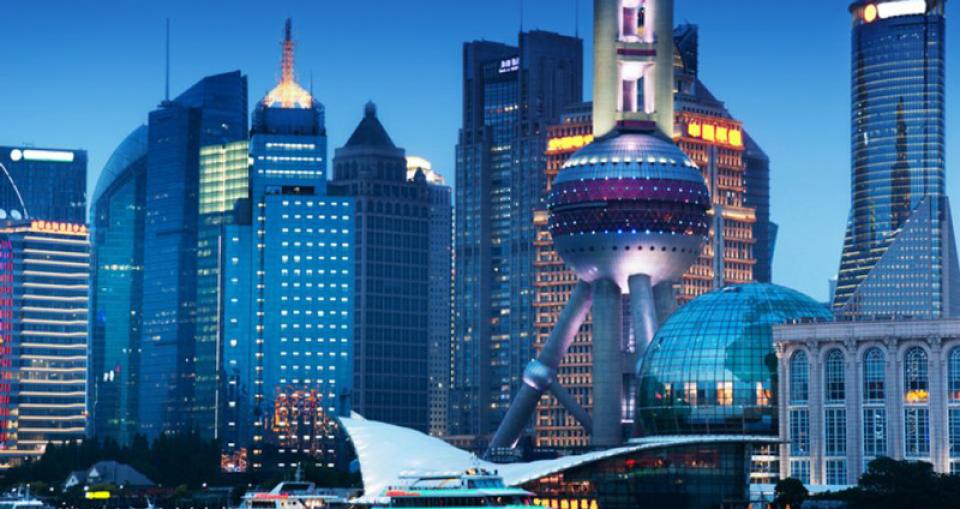If you want to succeed in the China market beyond 2017, it's critical that you first understand it. Stephen N. Anderson explains how, despite the many doubts and risks involved, international companies have succeeded in taking it on.
Today, China provides significant business and financial opportunities. It is well known not just for being the largest global supplier of parts and goods but its own rising businesses and an educated middle class of a new generation of business leaders and consumers - estimated to be 350 million people.
In addition, China is becoming independently strong in leading technology and increasingly competitive in major industry sectors. On October 10th The New York Times reported that Beijing, “has called for one out of every five cars sold in China to run on alternative fuel by 2025”. In September, China issued rules that would require the world’s carmakers to sell more alternative-energy cars in China if they wanted to continue to sell traditional petroleum-fueled cars.
In the past, China has been the subject of economic and business speculation and intense analysis, particularly during the past 25 years. Some of the experience and findings continue to lay doubts in the minds of businesses, investors and banks who are interested, but concerned, about the risks articulated.
The new challenges of global competition and acquisition raise more concerns, and opportunities. One example, of many, of how China’s industries can no longer be labeled just as low cost product producers for others is Zhejiang Geely Holding Group, a conglomerate based in Hangzhou.
In 2010, the company moved up the industry ranking from manufacturing refrigerator parts to acquiring Volvo, the Swedish automaker, from Ford of America. Then in October 2017, Geely acquired 51.5% of Saxo Bank, a Danish investment bank headquartered in Copenhagen.
Saxo is no ordinary investment bank. It was very early in adopting online securities trading and invests heavily in financial technology.
The early concerns about dealing with China have entered curbside language:
• Doubts about a communist country being able to succeed in global commerce were prevalent early on and still echo.
• Reports and charges have been made regarding theft of US and other countries' technology by Chinese companies.
• Difficulty in negotiations, including what seemed to be agreements by negotiating teams turning into no agreement the following meeting.
• The concept of what was written on contracts, discussed in meetings and verbally agreed to, were not subscribed to.
• Creativity was not something the Chinese could do because of their rigid education system and restrictive family culture.
• China’s banking system was failing due to bank lending policies, that could cause the entire country to find itself in economic default.
Despite all of those doubts from the past potentially standing in the way, a sufficient number of non-Chinese companies have been successful in the country due to what in retrospect seems common sense. The layer that preceded the “common sense” was learning and understanding that long-standing cultures like China operate on well-established and trusted processes and criteria.
These businesses have learned how to succeed in the “zhongguo” or middle kingdom that, from the outside, is a complex dragon. Others can learn from their experience. And, as in most cases, knowledge and recognition of your customers' expectations is essential to sustainable success. It wasn’t that the spooky risks had disappeared. They learned what were real, and what were not, and how to become successfully immersed in the country in order to become trusted and understood.
What relevance do these cultural, “getting to know the villagers” suggestions have today, given the emergence of China from being the global low cost manufacturing source of choice to setting new standards and acquiring leading businesses everywhere outside of China?
"China’s GDP has grown nearly 10 percent a year as it has successfully revised its economic strategy from centrally-planned to a market-based economy."
The concerns, speculation and misunderstanding about China did not inhibit the country’s successful growth. China’s GDP has grown nearly 10 percent a year as it has successfully revised its economic strategy from centrally-planned to a market-based economy. Mark that as creativity on a very large scale.
Success through learning
Taking a look at what some leading “western” brands have done to establish a foundation for success in China can contribute to learning and success.
In January 1999 Starbucks opened its first store in mainland China. Granted, that was 18 years ago, and before the China we see today.
Starbucks has adopted well. Turning a tea drinking nation to one that savours coffee. They intend to grow from their current level of 2,800 stores to more than 5,000 by 2021.
Smooth sailing since 1999? Not really. In 2007, a store in the Forbidden City was closed. A TV anchorman, Rui Chenggang, blogged that the store “tramples over Chinese culture.”
So what has Starbucks done to avoid being further rejected by a culture unaccustomed to coffee?
• Developed a strategy specific to making the Chinese customer experience be Chinese, starting with partnering with smaller, local companies for supplies and services.
• Selective hiring of its employees, all Chinese.
• It pays above standard wages, and provides employees with high level training.
• Established recognition with “Coffee Master” title for those who pass a test after training.
• Worked closely with local government officials.
• In January of this year, Starbucks began establishing subsidised housing accommodation for its more than 30,000 employees in China.
Silicon Valley Bank (SVB) is another example. Based in San Jose, California and focused heavily on technology company customers, SVB established its first relationship in Asia in 1990, and in 2005 set up a subsidiary - SVB Business Partners Shanghai.
They then spent the next five years developing business relationships in China, and in 2010 established another subsidiary - SVB Business Partners Beijing.
Both subsidiaries served local technology companies and venture capital investors, providing advisory services and offshore US dollar-based investment support for their Chinese company customers.
Most important, bank management learned from their Chinese subsidiaries the value of relationships and how to nurture them in China.
Then in 2011, the bank’s CEO, Ken Wilcox, moved to China to lead the China strategy, leaving Tom Becker to run the business in the US. That move, in itself, was key.
Hierarchy is very important in Chinese culture. His presence established a commitment and credibility at the highest level. The bank then moved select employees to China who could assimilate to this new culture and maintain the bank’s strong internal culture.
It has worked. From losses in 2012 to profitability in 2013, and providing additional double digit assets for the bank to manage from the Chinese subsidiaries.
Stephen N. Anderson is managing partner at Marquis Advisory Group, an international management consulting firm based in San Francisco. Email sanderson@magsf.us or visit www.marquisadvisory.com






